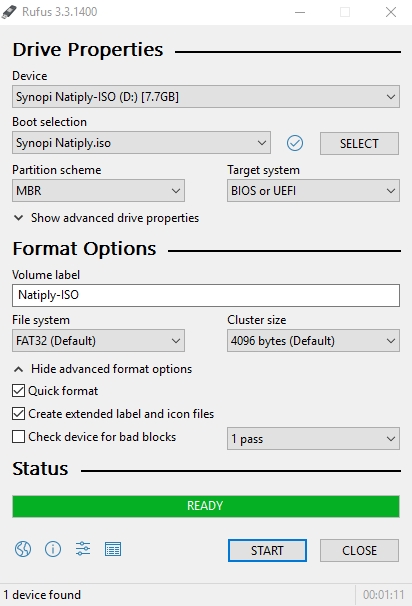
- #BURN ISO IMAGE TO USB FLASH DRIVE HOW TO#
- #BURN ISO IMAGE TO USB FLASH DRIVE INSTALL#
- #BURN ISO IMAGE TO USB FLASH DRIVE 64 BIT#
- #BURN ISO IMAGE TO USB FLASH DRIVE WINDOWS 10#
- #BURN ISO IMAGE TO USB FLASH DRIVE ISO#
You can then restore the partition as before without losing data. The great thing is that FreeBSD also provides a partition image. This tool allows you to temporarily use the partition image file as a real partition. The first version of FreeBSD was released in 1993, and today FreeBSD is the most widely used open-source BSD distribution, accounting for more than three-quarters of all installed systems running open-source BSD derivatives.ĪIO Boot supports booting all in one USB, including FreeBSD. And with the help of the Partition Image Mapper tool, you can boot many other operating systems. Although for legal reasons FreeBSD cannot use the Unix trademark, it is a direct descendant of BSD, which was historically also called “BSD Unix” or “Berkeley Unix”.
#BURN ISO IMAGE TO USB FLASH DRIVE HOW TO#
USB-HDD) as the first boot device.Unlike dd or Win32 Disk Imager, this article will guide you how to create FreeBSD bootable USB from Windows without data loss.įreeBSD is a free and open-source Unix-like operating system descended from Research Unix via the Berkeley Software Distribution (BSD).
#BURN ISO IMAGE TO USB FLASH DRIVE WINDOWS 10#
When Rufus operation is completed, close Rufus utility, unplug the USB stick and use it to troubleshoot Windows 10 or to perform a clean OS installation.
#BURN ISO IMAGE TO USB FLASH DRIVE ISO#
( Wait until Rufus utility erases your USB stick and transfers Windows 10 ISO files )ĩ. Read carefully the warning message and press “ OK”.

In order to boot from a non UEFI USB flash drive, you must apply the following setting in BIOS:Ī.
#BURN ISO IMAGE TO USB FLASH DRIVE 64 BIT#

#BURN ISO IMAGE TO USB FLASH DRIVE INSTALL#
The next step is to download the Rufus USB creator utility, which is an excellent tool to create a Windows bootable USB flash drive, to install or to repair Windows.ġ. Step 2: Download RUFUS USB Boot Creator Utility*. How to Download Any Version of Windows or Office with the Windows ISO Downloader tool.How to Download Windows 10 ISO using the Media Creation Tool.To do that, follow the instructions from one of these tutorials: Download Windows 10 in a ISO file.įirst of all, proceed and download a legally copy of Windows 10 in a ISO file. How to Create a Bootable Windows 10 USB Flash Drive using RUFUS utility. An EMPTY USB Disk with at least 8GB storage space. The Windows 10 USB installation media can be used to install Windows 10 from USB, or to repair a damaged Windows 10 installation.ģ. In this tutorial you can find step by step instructions on how to create a Windows 10 USB installation media, from a Windows 10 ISO image file, by using the RUFUS USB creator utility.


 0 kommentar(er)
0 kommentar(er)
